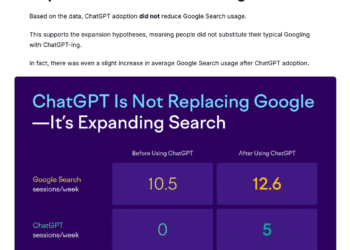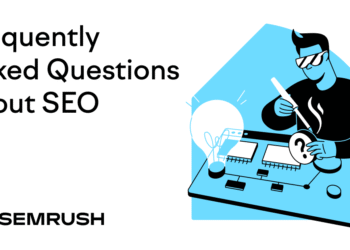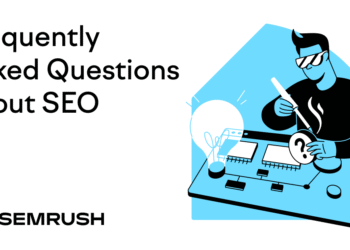What Are Long-Tail Keywords?
Long-tail keywords are highly precise search engine queries people use when they’re searching for something specific or searching conversationally. These queries attract relatively low search volumes and face relatively low competition from websites trying to show in search results.
Here’s a long-tail keyword example:

Long-tail keywords are often but not necessarily over three words in length.
Long-Tail vs. Mid-Tail vs. Short-Tail Keywords
Long-tail keywords contrast with short-tail keywords, which are the broadest, highest-volume, and highest-competition keywords in a given niche.
Mid-tail keywords lie somewhere in between—they’re medium in terms of specificity, search volumes, and keyword competition.

The line between mid-tail and long-tail keywords is blurry. You should categorize keywords based on your judgment of their specificity, popularity, and competition levels within the context of your niche.
Why Are Long-Tail Keywords Important in SEO?
Long-tail keywords are important in search engine optimization (SEO) because they’re relatively easy to rank highly for, they can drive high-quality traffic, they have high collective search volumes when grouped, and they can help you appear in AI-generated responses.
They’re Relatively Easy to Rank Highly For
If you target a long-tail keyword on your website, you should find it relatively easy to earn a high unpaid ranking. Which is important because top-ranking results get the most views and clicks.
Long-tail keywords attract low competition for two main reasons:
- Due to their specificity, they’re relevant to a smaller group of websites
- Due to their low search volumes, they draw less marketing investment and effort from other websites trying to rank
You can evaluate keyword competition for any term by analyzing the search engine results page (SERP). The lower the quality of the top websites and webpages, the easier it should be for you to earn a high ranking.
Alternatively, use Semrush’s keyword tools to analyze the below keyword difficulty metrics:
- Keyword difficulty (KD %): Measures how hard it is to rank in Google’s top 10 results
- Personal keyword difficulty (PKD %): Measures how hard it’ll be for your website specifically to rank in Google’s top 10 results

They Can Drive High-Quality Traffic
Long-tail keywords can drive high-quality trafficbecause people who use precise keywords often have high intent—i.e., they know exactly what they’re looking for and are almost ready to take action.
For example, someone searching for a product with specific features is more likely to buy than someone searching for the general product type.

They Can Have High Collective Search Volumes When Grouped
If you group together long-tail keywords based on search intent (what the user wants), they can have high collective search volumes. By targeting these grouped keywords together on the same page, you can reach a larger audience than if you were to only focus on a single keyword.
For example, the long-tail keywords below have average monthly search volumes as low as 10. But the keyword group (or keyword cluster) has a collective search volume over 1.5K, according to Semrush data.

Long-tail searches tend to be highly fragmented because there can be lots of different ways to phrase a complex query.
They Can Help You Appear in AI Responses
Targeting long-tail keywords could boost your visibility in AI-generated responses, which play a growing role in consumer behavior.
There are two main reasons why long-tail keywords are good for AI search optimization:
- AI search is conversational. People tend to engage with AI systems conversationally by inputting highly specific queries. If you use long-tail keywords appropriately, your content is more likely to align with users’ language and influence the AI response.
- AI tools use query fan-out. Google AI Mode uses query fan-out, which means expanding a user’s query into many related sub-queries to collect more varied information and generate a comprehensive response. Targeting long-tail keywords may increase your chances of being matched to one of these sub-queries and appearing in the AI response.
For example, Canva’s highly specific content may help it appear in this ChatGPT response:

How to Find Long-Tail Keywords
You can find long-tail keywords by using keyword research tools, exploring Google’s autocomplete predictions, analyzing Google’s People Also Ask boxes, looking at your current keyword rankings, checking competitors’ keyword rankings, asking AI chatbots for ideas, and exploring online communities.
Use a Keyword Research Tool
In my experience as an SEO content creator, the easiest way to find long-tail keywords is with Semrush’s Keyword Magic Tool. Because it lets you search a database of 27.2 billion keywords and filter based on various keyword metrics.
To get started, enter a term to base your search around. Then add your domain, choose your target country, and click “Search.”

The tool will display “Broad Match” keywords that contain your starting term or a close variation. You can select other match types, but this option tends to work best.
To focus on keywords most likely to be long-tail, I recommend filtering your results based on search volume, Personal Keyword Difficulty, and word count.
For example:
- Volume: 0-1,000
- Personal KD %: 0-29
- Word count: 3+

Another option is to apply the “Questions” filter. Because question keywords are often long-tail by nature.

Once you’ve applied your chosen filters, analyze your results and save your favorite keywords to a list.
Explore Google’s Autocomplete Predictions
Google’s search bar provides autocomplete predictions based on real searches (among other factors), and these predictions can be a good source of long-tail keyword ideas.
Start typing relevant terms into Google’s search bar to see what long-tail predictions show up:

Just bear in mind that these predictions aren’t exhaustive and are personalized to you.
Plus, you won’t have access to keyword search volumes or difficulty scores. You can get these metrics by entering your keywords into Semrush’s Keyword Overview tool.
Analyze Google’s People Also Ask Questions
Google sometimes displays People Also Ask (PAA) boxes containing questions related to the user’s search, and these questions can be good examples of long-tail keywords.
Perform relevant Google searches to see if any PAA questions show up.

Alternatively, use a tool like AnswerThePublic to collect PAA questions in bulk.

Note that these tools won’t provide keyword search volumes or difficulty scores. To check these metrics, enter your keywords into a tool like Semrush’s Keyword Overview.
Look at Your Current Keyword Rankings
Look at your current keyword rankings to see if your website naturally ranks for any long-tail keywords.
Generally, you’ll find it easier to boost existing rankings than to earn new ones. Because you’ll already have a foundation to build on.
You can check your rankings for up to 1,000 queries chosen by Google in Google Search Console.
After signing in or setting up, go to “Performance” > “Search results.” Then, scroll down to the “Queries” table to look for long-tail keywords.

Alternatively, check your rankings with Semrush’s Organic Research tool.
This tool lets you filter results based on keyword search volumes and difficulty scores, so it’s easier to find the long-tail keywords.

Check Your Competitors’ Keyword Rankings
Checking your competitors’ keyword rankings can be an effective way to find relevant long-tail keywords, and you can do this with a tool like Semrush’s Organic Research.
Enter a competitor’s domain into the tool and go to the “Positions” report. Then, filter for low-volume, low-difficulty keywords to find the most probable long-tail keywords.

You can save your favorite keywords to a keyword list.
Ask AI Chatbots for Ideas
You can ask AI chatbots like ChatGPT to provide long-tail keyword ideas based on your chosen topic.
Like this:

Just bear in mind that AI chatbots don’t have access to real search engine data. They generate ideas based on what they’ve learned from analyzing high volumes of content.
Be sure to do extra research before adding these keywords to your strategy.
Explore Online Communities Like Reddit and Quora
People often go to online communities like Reddit and Quora when they can’t find an answer to their question elsewhere, so these communities can be great places to find unique long-tail keyword ideas.
Use the search functions on these platforms to find relevant subcommunities or posts to explore.
Like this:

Because they’re so specific, these keywords might not appear in keyword databases and might not have measurable search volumes. But they could still be worth targeting.
How to Rank for Long-Tail Keywords
To rank for long-tail keywords, you need to follow SEO best practices.
Here are some of the most important tips for achieving high long-tail keyword rankings:
- Create keyword clusters. Group your keywords together based on search intent. You should then target grouped keywords together in one location and prioritize clusters that seem the most valuable.
- Target keywords in the right places. Decide whether a long-tail keyword cluster deserves a dedicated piece of content or a subsection within a broader page. This depends on the search intent and your wider content strategy.
- Focus on helpfulness. Create unique, helpful content that addresses the target user’s precise wants. Only choose keywords that complement your topical expertise.
- Use keywords naturally. Try to naturally incorporate keywords into your page’s title tag, heading tags, alt tags, and body content. Always prioritize the naturalness of your content over matching a keyword exactly.
- Create search-friendly filter pages. Consider optimizing your most important filter pages if your website has filtering options (e.g., for product price and color). This mainly involves making them accessible to search engines and adding unique content.
- Use relevant schema markup. Use schema markup to help search engines understand and display different types of data on your page. For example, FAQ schema could help search engines identify questions and answers.
- Build internal links. Link to long-tail pages from related pages on your site. This helps search engines and users to discover these pages and understand their relevance.
How to Find Long-Tail Keywords for PPC
You can also target long-tail keywords through pay-per-click (PPC) marketing, meaning that you can try to appear as a sponsored search result.
Sponsored results can take a few forms. This example SERP features product listing ads and a traditional paid search ad:

Long-tail keywords attract low competition from other advertisers, which can make it easier for you to earn a prominent spot and lead to lower costs per click (CPCs).
You can find low-competition, low-CPC keywords by using these keyword metrics in Semrush’s Keyword Magic Tool:
- Competitive density (Com.): A score of 1.00 represents the highest level of competition among advertisers, while a score of 0.00 represents no competition among advertisers
- CPC (USD): The average cost per click an advertiser pays, in U.S. dollars

Long-Tail Keyword Examples
Here are real examples of how SaaS, local, and ecommerce websites have used long-tail keywords to attract high-quality traffic.
SaaS Long-Tail Keyword Example
SaaS company Wave has landing pages tailored to specific service and audience segment combinations, and these pages rank for a variety of high-value long-tail keywords.
For example, the page below is centered around free accounting software for nonprofits. It features helpful content tailored specifically to this audience, and keywords appear naturally throughout the content.

In July 2025, the page ranked in the top three results for 25 keywords—the majority of which were long-tail. These rankings generated traffic worth $2.6K, according to Semrush’s Organic Research tool.

Wave also appeared prominently when I researched topics related to those keywords in AI tools like ChatGPT.

Local Long-Tail Keyword Example
Choose Chicago has attraction guides that cover multiple FAQs, allowing them to target a variety of short-, mid-, and long-tail keywords with local intent.
Because the answers are relatively thin and topically related, it makes sense to cover multiple keywords on one page. Someone searching for one of these answers is probably curious about the others as well.
Here’s a snapshot of one of these guides:

In June 2025, this guide ranked in the top three results for 482 keywords, according to Organic Research data. Exactly half of these keywords have a word count of four or over (meaning they’re likely to be long-tail), as this chart shows:

Ecommerce Long-Tail Keyword Example
Ecommerce company Wayfair offers a wide range of product filters, and many of the website’s filter pages rank for long-tail keywords.
This is because select filters generate unique, indexable pages that capture specific user intents.
Like this:

How to Track Long-Tail Keyword Rankings
You can track your rankings for long-tail keywords chosen by Google in Google Search Console.
The tool shows the following metrics for each keyword, according to your selected time range:
- Clicks: How many times users clicked your result
- Impressions: How many times users viewed your result
- CTR: Click-through rate, which represents clicks as a percentage of impressions
- Position: Your average highest ranking in organic results
Alternatively, use Semrush’s Position Tracking tool to monitor the long-tail keywords of your choice.
The tool can show you the following information for each keyword in Google Search:
- Actual position vs. potential position
- Competitor rankings
- Whether you rank for any SERP features (e.g., PAA)
- Keyword search volumes, difficulty scores, etc.
- Estimated traffic vs. potential traffic

You can also track your visibility in ChatGPT and Google AI Mode.
















